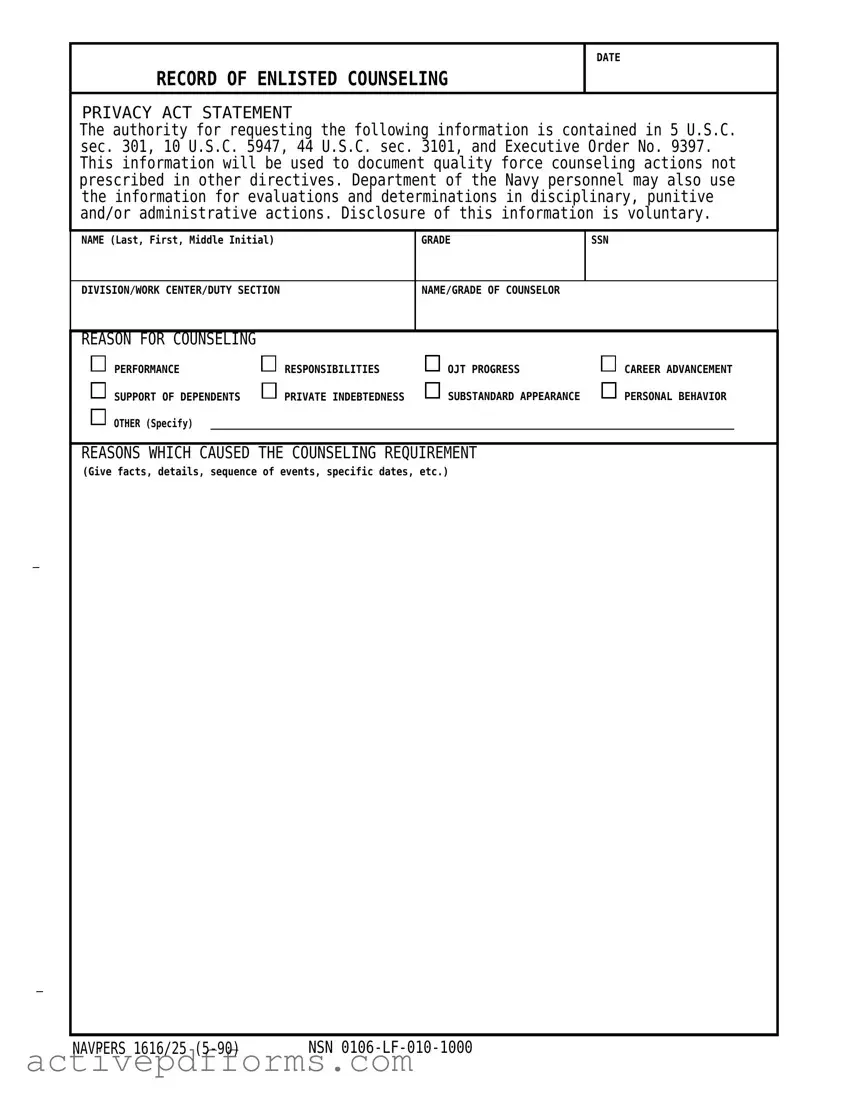Free Navpers 1616 25 PDF Template
The NAVPERS 1616/25 form, commonly referred to as the Record of Enlisted Counseling, serves as a vital tool in the United States Navy for documenting quality force counseling actions not otherwise specified in directives. It is authorized by several statutes and an executive order, underscoring its legal and operational importance. The form facilitates the recording of counseling sessions between Navy personnel and their counselors for a wide array of reasons, from performance and career advancement to personal behavior and indebtedness, thereby ensuring structured support and accountability within the Navy's ranks.
Edit Navpers 1616 25 Now


